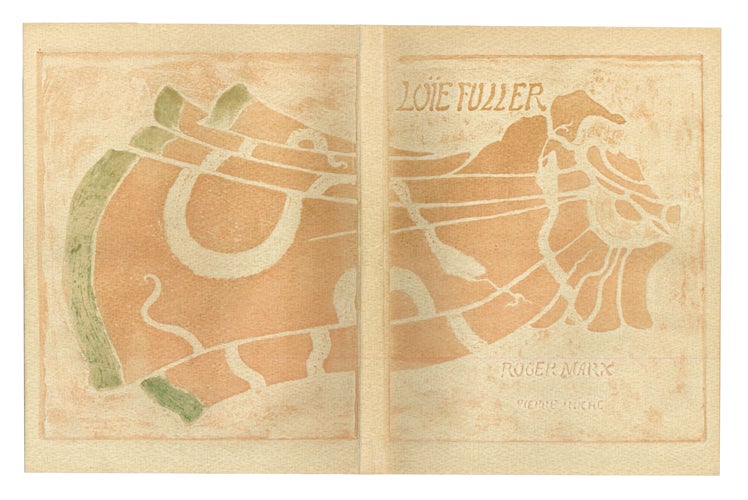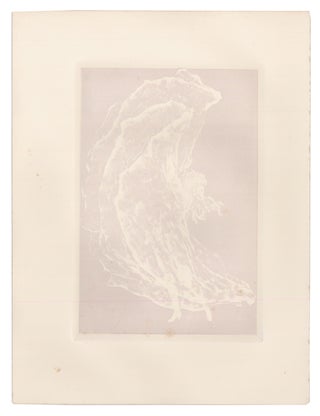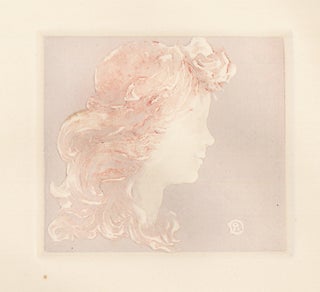La Loie Fuller.
ROCHE, Pierre. La Loie Fuller. Text by Roger Marx. 26 pp. With 17 colour relief engravings by Pierre Roche. Small folio, 265 x 200 mm, bound loose as issued in the original illustrated embossed wrappers and cardboard chemise. Preserved in an elaborate carved wooden slipcase. Evreux: Charles Hérissey, 1904.
One of the rarest and most beautiful books of the Fin de Siecle. Marx's La Loie Fuller is also one of the most curious books from the Art Nouveau period. Using a reproductive process unseen in book production, the illustrator Pierre Roche captured the fluid movement of Loie Fuller's robes swishing through the air via his new process of 'coloured relief engravings.' This is number 48 of an edition of 130 copies.
Loie Fuller (1862-1928), a burlesque dancer whose fame rested on her renowned "skirt dance," developed a unique form of choreography which emphasized the human body as transformed by artful manipulation of her silk dress, especially under coloured gas lighting. By 1892 Fuller was in Paris and performing with the Folies Bergeres. She was an immediate sensation with audiences and critics. Stephane Mallarme, the leading poet of the Symbolist movement, dubbed her "La Loie." One reviewer described the effect as "unique, ethereal, delicious... she emerges from darkness, her airy evolutions now tinted blue and purple and crimson, and again the audience... insists upon seeing her pretty piquant face before they can believe that the lovely apparition is really a woman."
Pierre Roche (1855 -1922), French sculptor, made his first relief prints using a plaster mold, then adding colours to each print with a brush. He called these new forms of monotypes "Printed Watercolours." His first subjects ranged from natural history images to portraits. Subsequently, Roche developed what he called "gypsography," a graphic process that used a metallic mold in place of his original plaster molds, which proved too fragile for repeated printings. Added to the overall attractiveness of the book is Auriol's italic type, which was used here for the first time. Some light scattered foxing, still a very nice copy. The book is rare in any condition, but especially so in the original wrappers and box.
Carteret IV, p. 345.
Item nr. 164865
Price:
$12,500.00



